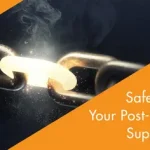
Most companies use mission and vision statements to guide their actions, decisions, and culture. However, mission statements can also be used within a company’s functional teams and business units. These can give new purpose and identity to groups who may be undervalued or are seen as a bureaucratic necessity rather than a benefit. Procurement leaders, ask yourselves: do I need a mission statement?
In procurement’s case, realigning from reactive and transactional to strategic and intentional demands that a common vision is communicated and that strategic goals are aligned across the group. This is where the mission statement comes in.
Mission statements can be highly useful for getting everyone on the team, as well as those it supports, rallied around the unified vision and goals. In any mission development process, it is critical to communicate and create buy-in within the affected group and with external stakeholders who may be impacted. Understanding how change impacts various groups such as finance, HR, operations, and IT is key in establishing alignment between procurement’s mission and that of the business units and overall company.
How can mission statements be made actionable and embedded in the team’s mindset? Savings, diversity spend, and other quantitative factors will always be key measures on the procurement scorecard, but how about the qualitative factors? Those “intangibles” that are often overlooked but are often at the heart of a procurement team’s mission?
Answers to the following questions will assist in defining a procurement team’s mission statement as well as identifying where improvements are needed:
- Does an organization go beyond purchasing and achieve successful collaboration with strategic partners?
- Is the team integrated enough into business decisions to identify opportunities that reduce demand or consolidate spend between business units to drive volume incentives?
- Are reductions in total cost of ownership captured due to the team’s working knowledge of the company’s operations?
- What does success look like and why?
- What are the indicators that will be evident once the organization has reached its goals?
- What new functions has the organization adopted in an ideal future state?
- What are the current challenges to overcome?
- Do we measure success by dollars saved, or social responsibility? Or something else altogether?
Once a roadmap is established to address the gaps made evident by the previous questions, the end state objectives can be used to create the team’s mission and vision – which not only serve as a guide to the ideal state but also a source of inspiration and focus for when the team inevitably struggles to move forward.
These concepts can be applied to procurement teams ranging from 2 to 200 employees. Regardless of the team size, a common understanding of team purpose and identity as articulated in a mission statement provides the motivation and focus needed to see the team through to achieving its objectives and continuing a path of growth.
Subscribe to Arroyo Strategy Insights to access whitepapers, presentations, plus our latest thought leadership.



